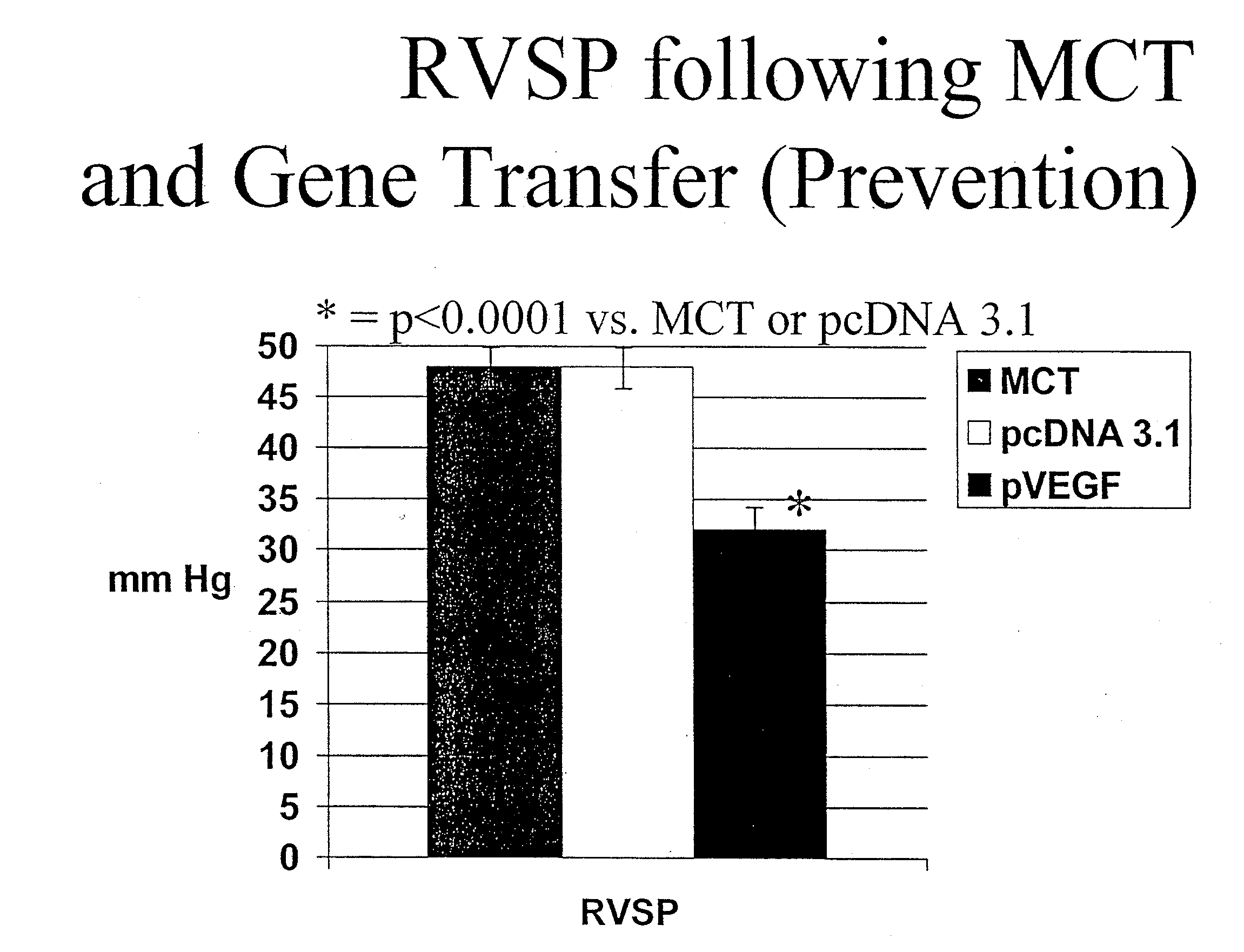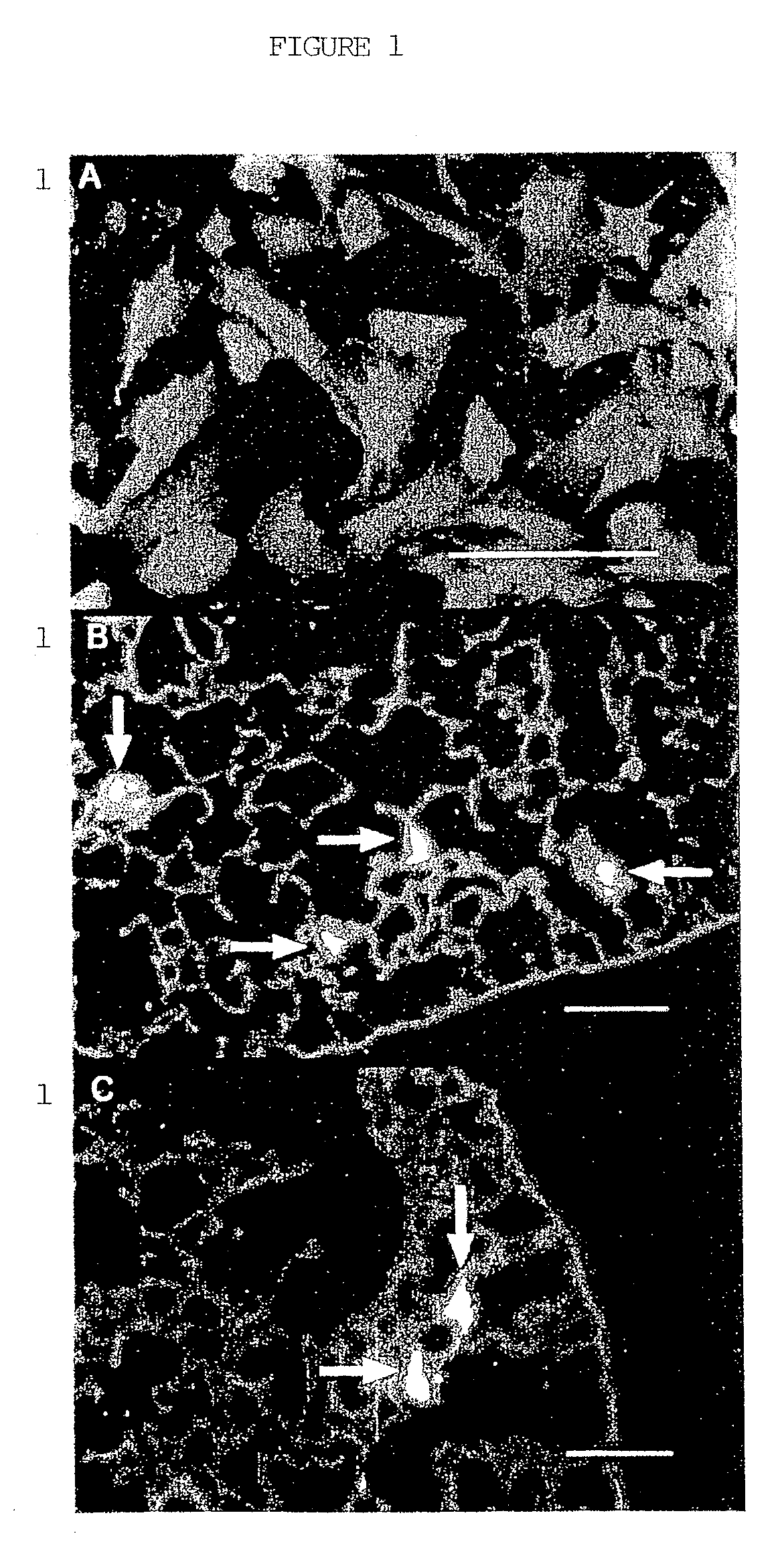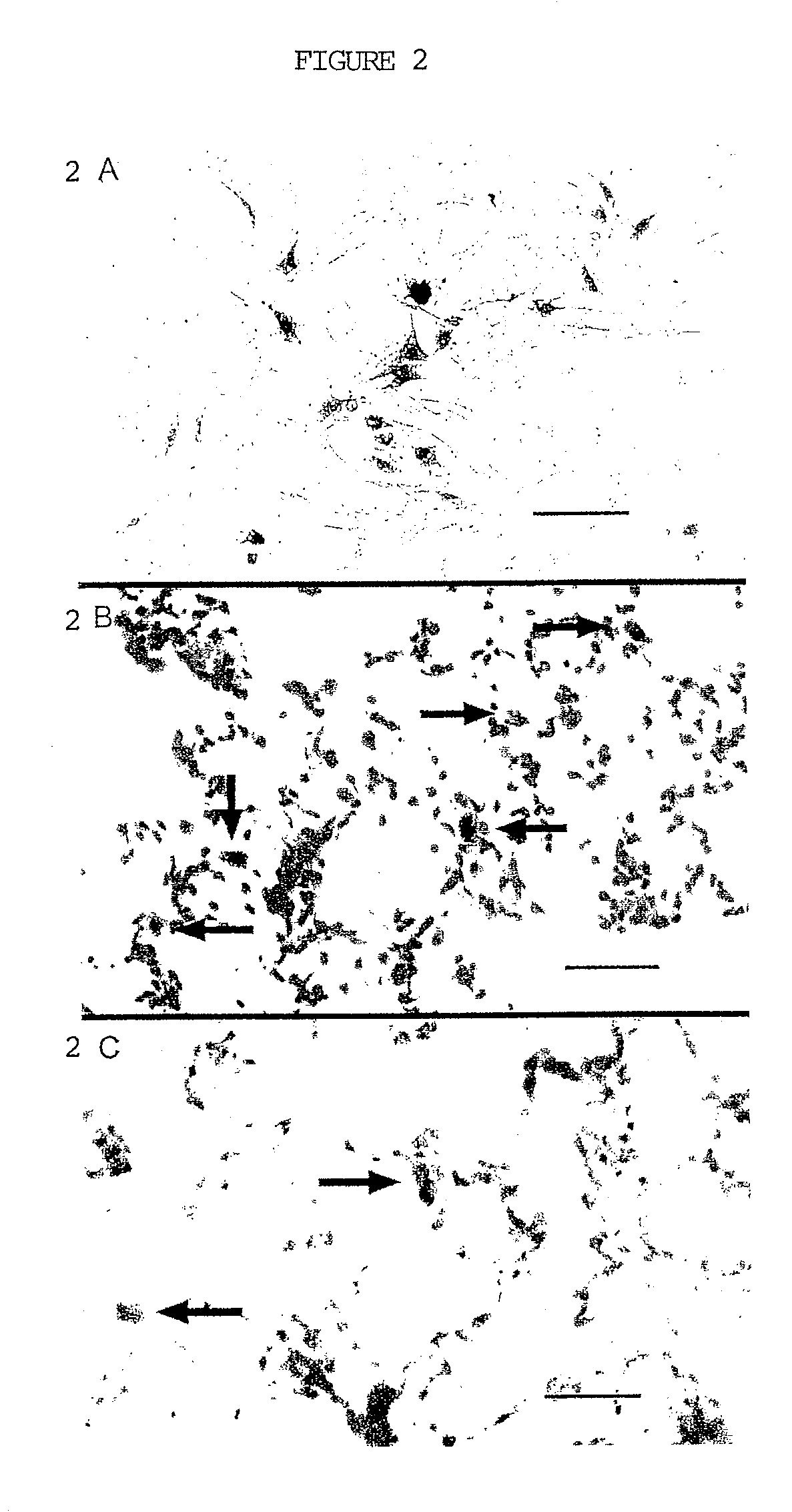Cell based therapy for the pulmonary system
a cell-based therapy and pulmonary system technology, applied in the field of medical treatments, can solve problems such as adverse consequences, and achieve the effects of low arterial pressure, low shear, and high surface area
- Summary
- Abstract
- Description
- Claims
- Application Information
AI Technical Summary
Benefits of technology
Problems solved by technology
Method used
Image
Examples
example 1
Pulmonary Artery Explant Culture
[0125] Fisher 344 rats (Charles River Co.) were obtained at 21 days of age and were sacrificed by overdose with ketamine and xylazine. The main pulmonary artery was excised and transferred immediately into a phosphate-buffered saline (PBS) solution containing 2% penicillamine and streptomycin (Gibco BRL, Burlington, Ontario). The adventitia was carefully removed with sterile forceps, the artery opened longitudinally and the endothelium removed by abrasion of the intimal surface with a scalpel. The vessel was cut into approximately 4 millimeter square pieces which were placed intimal surface down on individual fibronectin-coated (Sigma Chemical Co., Mississauga, Ontario) tissue culture plates (Falcon, Becton Dickinson Canada, Mississauga, Ontario). The explants were then grown in Dulbecco's Modified Eagle Media with 10% fetal calf serum (FCS) and 2% penicillamine and streptomycin (all Gibco BRL), in a humidified environment with 95% O2 and 5% CO2 at 3...
example 2
Alpha-Smooth Muscle Actin and Von Willebrand Factor Fluorescent Staining
[0126] To confirm their smooth muscle cell identity and rule out endothelial cell contamination, cells at the third passage were plated onto cover slips and grown until 70% confluent, at which time they were fixed in acetone at room temperature for 10 minutes. The cells were incubated with FCS for 30 minutes at 37° C. to block non-specific bonding sites, and then with a monoclonal anti-alpha-actin antibody (5 micrograms / millilitre) (Boehringer Mannheim) and a rabbit-derived polyclonal anti-von Willebrand Factor antibody (1:200 dilution) (Sigma) for 60 minutes at 37° C. in a covered humidified chamber. Negative control cover slips were incubated with PBS for the same duration of time. The cover slips were then washed in PBS, and incubated for 60 minutes at room temperature in a PBS solution containing a Cy3-conjugated donkey anti-mouse IgG antibody (1:200 dilution) (Jackson ImmunoResearch Laboratories), a fluore...
example 3
Ex Vivo Cell Transfection with the CMV-βGal Plasmid
[0130] The vector CMV-βGal (Clontech Inc., Palo Alto, Calif.), which contains the beta-galactosidase gene under the control of the cytomegalovirus enhancer / promoter sequence, was used as a reporter gene to follow the course of in vivo transgene expression. The full-length coding sequence of VEGF165 was generated by performing a reverse transcription polymerase chain reaction using total RNA extracted from human aortic smooth muscle cells and the following sequence specific primers: sense 5′ TCGGGCCTCCGAAACCATGA 3′ (SEQ ID. NO. 1), antisense 5′ CCTGGTGAGAGATCTGGTTC 3′ (SEQ ID. NO. 2). This generated a 649 bp fragment which was cloned into the pGEM-T vector (Promega, Madison, Wis.), and sequenced to confirm identity. The fragment was then cloned into the expression vector pcDNA 3.1 at the EcoR1 restriction site, and correct orientation determined using a differential digest. The insert deficient vector (pcDNA 3.1) was used as a contr...
PUM
| Property | Measurement | Unit |
|---|---|---|
| length | aaaaa | aaaaa |
| concentration | aaaaa | aaaaa |
| diameter | aaaaa | aaaaa |
Abstract
Description
Claims
Application Information
 Login to View More
Login to View More - R&D
- Intellectual Property
- Life Sciences
- Materials
- Tech Scout
- Unparalleled Data Quality
- Higher Quality Content
- 60% Fewer Hallucinations
Browse by: Latest US Patents, China's latest patents, Technical Efficacy Thesaurus, Application Domain, Technology Topic, Popular Technical Reports.
© 2025 PatSnap. All rights reserved.Legal|Privacy policy|Modern Slavery Act Transparency Statement|Sitemap|About US| Contact US: help@patsnap.com



